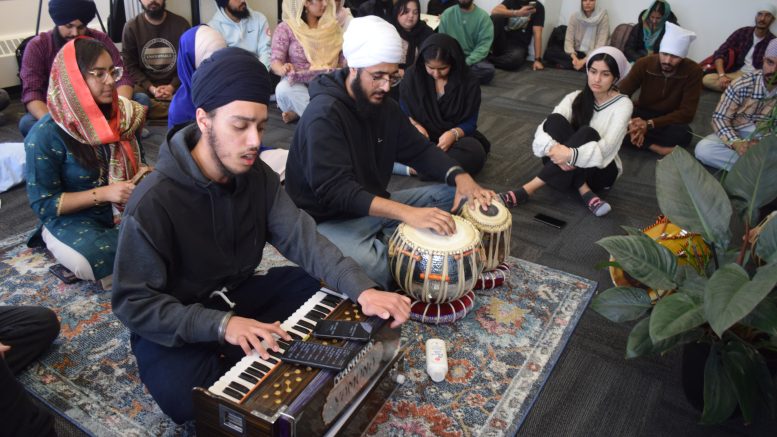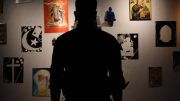Students welcomed Sikh Heritage Month, a designated month recognized by the provincial and federal government, on April 1 in the Multi-Faith Centre.
The University of Manitoba Sikh Students’ Association (UMSikhSA) celebrated the occasion by hosting kirtan night, an evening prayer session with religious verses recited in song.
“We do kirtan for the sake of everybody’s prosperity,” stated Gurleen Kaur, UMSikhSA volunteer coordinator.
Gurkaranbir Singh, UMSikhSA director of external affairs, explained that each word sung during the group worship originated from the Guru Granth Sahib — the central religious scripture of Sikhi and the final and eternal Guru.
Singh stated that the religious text is a collection of hymns, featuring the writings of Sikh Gurus dating back to the first Guru from the 15th century. Verses were recited in multiple languages, such as Persian, Hindi and Arabic.
Pahul Singh, a self-taught musician and one of the members that led the kirtan, stated that the event was held to “try to connect to God through listening and singing kirtan.”
Sikh Heritage Month proclaimed in 2019
April was proclaimed as Sikh Heritage Month by the Canadian Parliament in 2019, and following the passing of Bill 228 in the Manitoba Legislative Assembly, Manitoba also began recognizing Sikh Heritage Month that year.
Canada’s Sikh Heritage Month Act states that Canada has the second-largest Sikh population in the world and “recognizes the significant contributions that Sikh Canadians have made to Canada’s social, economic,
political and cultural fabric.”
April marks the celebration of Vaisakhi — the first day of the month of Vaisakh — which commemorates the creation of the Khalsa in 1699 by the 10th Sikh Guru. The Khalsa is a Sikh order that was created to defend any victims of aggression or injustice.
As part of kirtan night, the harmonium, a keyboard that functions similar to an organ, and tabla, a pair of hand drums, were amongst the instruments played to accompany the hymns.
Pahul Singh stated that traditionally, scriptures are sung to specific ragas, defined as musical melody structures which have been passed down by the Gurus.

A drawing of Guru Nanak and three kirpans were placed at the front of the prayer session. Photo by Milan Lukes
A drawing of the first Guru, Guru Nanak, and three kirpans, a blade that resembles a sword or dagger that is to be constantly worn by Khalsa Sikhs, were located at the front of the prayer session.
Gurkaranbir Singh noted that Sikhs do not pray in a particular direction, but that the kirpans were used to
symbolize God and focus the mind. He added that special safety measures were taken around the kirpans.
Free food was provided to everyone in attendance — imitating the community kitchen of a gurdwara — to uphold the principle of equality between all people regardless of any differences.
According to the 2021 Canadian census, over 770,000 people reported belonging to the Sikh faith which
represented approximately 2.1 per cent of Canada’s total population.
The Multi-Faith Centre is located in 521 UMSU University Centre and is available for all university members to access for communal and individual spiritual practices. It can be booked for single and recurring events throughout the year.




